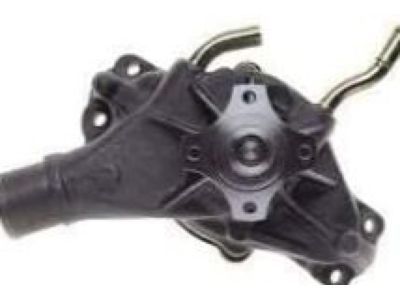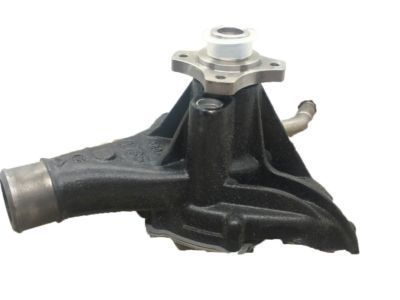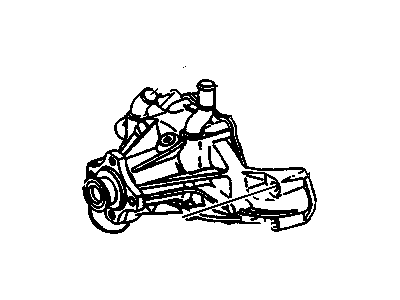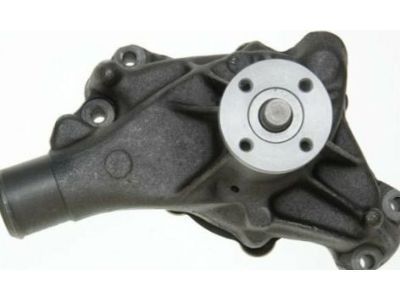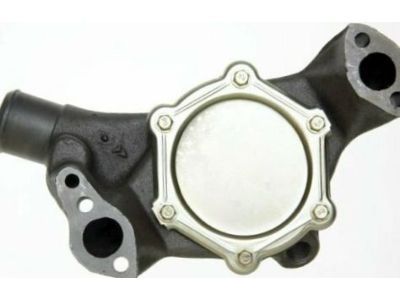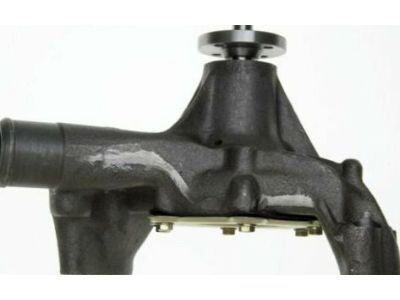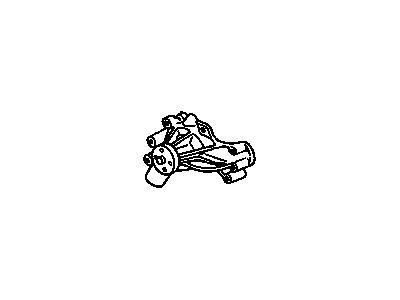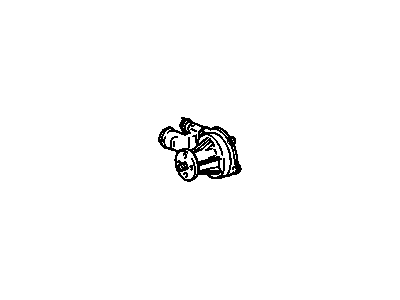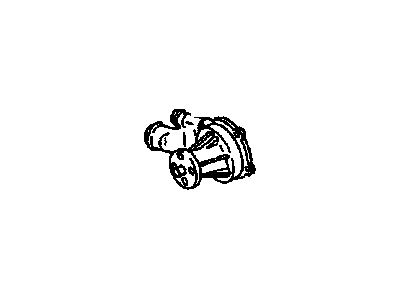
My Garage
My Account
Cart
Genuine Chevrolet Astro Water Pump
H2O Pump- Select Vehicle by Model
- Select Vehicle by VIN
Select Vehicle by Model
orMake
Model
Year
Select Vehicle by VIN
For the most accurate results, select vehicle by your VIN (Vehicle Identification Number).
6 Water Pumps found
Chevrolet Astro Engine Coolant Pump Kit
Part Number: 89060527$233.97 MSRP: $456.07You Save: $222.10 (49%)Ships in 1-3 Business DaysChevrolet Astro Water Pump Kit
Part Number: 19417097$137.69 MSRP: $268.39You Save: $130.70 (49%)Ships in 1-2 Business DaysChevrolet Astro Engine Coolant Pump Kit
Part Number: 12491038$94.23 MSRP: $230.74You Save: $136.51 (60%)Ships in 1-2 Business DaysChevrolet Astro Engine Coolant Pump Kit
Part Number: 19309748$61.63 MSRP: $110.54You Save: $48.91 (45%)
Chevrolet Astro Water Pump
This device found in Chevrolet Astro motor vehicles is central for regulating the engine temperature which is accomplished by moving coolant through the water jacket and toward the radiator. Today's Water Pumps are generally made of aluminum cast, which rotates with the help of belt clutch of crankshaft and has an impeller to pump water or coolant. Some signs of a bad water pump are: leakage, noise of the bearings, and high temperature due to the faulty impeller. Powerful water pumps can be procured for better coolant circulation, and Crankshaft can be between modified OE cast iron and special aluminum. Advantages such as no parasitic loss and selectable flow rates also apply to the electric water pumps, which are thus preferable in high-end car designs. The use of appropriate coolant every two years and proper replacement of damaged units are some of the most important things that should be performed to the water pump in order to serve a long and efficient time.
Each OEM Chevrolet Astro Water Pump we offer is competitively priced and comes with the assurance of the manufacturer's warranty for the part. Furthermore, we guarantee the speedy delivery of your orders right to your doorstep. Our hassle-free return policy is also in place for your peace of mind.
Chevrolet Astro Water Pump Parts Questions & Experts Answers
- Q: How to remove the water pump on Chevrolet Astro?A:To remove the water pump, start by disconnecting the cable from the negative terminal of the battery. On 1995 and earlier models, remove the hood latch mechanism. Drain the coolant from the Radiator and, on 1996 and later models, remove the air cleaner assembly and intake duct. Detach any hoses or wiring attached to the upper fan shroud and remove the upper fan shroud. Remove the drivebelt(s) and disconnect the hoses from the water pump, cutting them if necessary. Remove the engine cooling fan and clutch, as well as any brackets necessary for access. Remove the water pump-to-engine block bolts and tap the pump with a soft-faced hammer if it is stuck. For installation, use a gasket scraper to remove old gasket material and clean the mating surfaces with lacquer thinner or acetone. Coat both sides of the gasket(s) with RTV sealant and place it onto the water pump. Coat the threads of each water pump mounting bolt with RTV sealant and insert them into the pump. Tighten the bolts in a criss-cross pattern to the specified torque. The remaining steps are the reverse of removal. Refill the cooling system, run the engine, and check for leaks.
Related Chevrolet Astro Parts
Browse by Year
2005 Water Pump 2004 Water Pump 2003 Water Pump 2002 Water Pump 2001 Water Pump 2000 Water Pump 1999 Water Pump 1998 Water Pump 1997 Water Pump 1996 Water Pump 1995 Water Pump 1994 Water Pump 1993 Water Pump 1992 Water Pump 1991 Water Pump 1990 Water Pump 1989 Water Pump 1988 Water Pump 1987 Water Pump 1986 Water Pump 1985 Water Pump
